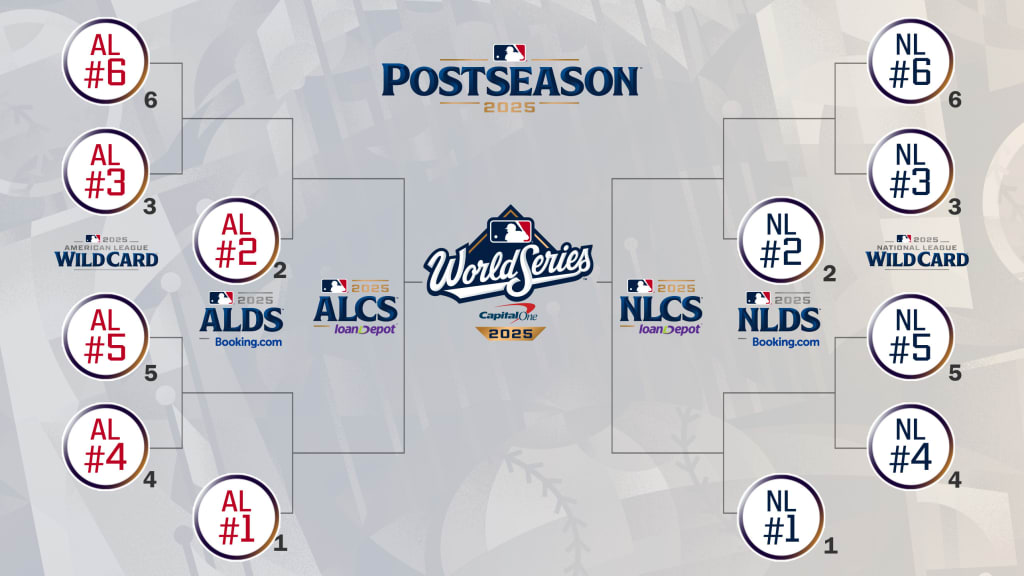
Major League Baseball unveiled a postseason format in 2022 that expanded both the pool of teams and the Wild Card round.
Here are answers to questions you might have about the format.
How many teams make the MLB playoffs?
The bracket-style postseason involves 12 teams (six from each league) -- an increase from 10 teams (five in each league) in the previous format. That includes the three division winners in each league and three Wild Card teams per league.
Does the Wild Card Game still exist?
No, the single-elimination Wild Card Game, which was in use from 2012-19 and again in ’21, was replaced by a best-of-three Wild Card Series.
How are the teams seeded?
In each league, as follows:
- No. 1 seed: Best league record
- No. 2 seed: Second-best division winner
- No. 3 seed: Third-best division winner
- No. 4 seed: Best record among Wild Card teams
- No. 5 seed: Second-best record among Wild Card teams
- No. 6 seed: Third-best record among Wild Card teams
How do the MLB playoffs work?
The Nos. 1 and 2 seeds will receive first-round byes and advance directly to the Division Series.
For the Wild Card Series, the No. 3 seed will face the No. 6 seed, and the No. 4 seed will face the No. 5 seed.
What if a Wild Card winner from one division has a better record than a division winner from another?
It doesn’t matter. The division winner takes precedence with regard to seeding.
What is the format for the Wild Card Series?
Each Wild Card Series game will be played in the home park of the team with the higher seed (so, the Nos. 3 and 4 seeds will have the hosting duties). The games will be scheduled to take place in a three-day window so that the division winners with byes are not forced to wait around longer than is beneficial.
The winners of the Wild Card Series will advance to the Division Series, and the losers are eliminated from the postseason.
Are teams reseeded after the Wild Card Series?
No. The No. 1 seed will face the winner of the Wild Card Series between the Nos. 4/5 seeds, while the No. 2 seed will face the winner of the Nos. 3/6 series. This ensures that the No. 1 seed won't face another division winner in the Division Series round while still preserving the bracket system.
Is the Division Series still a best-of-five?
Yes. The only thing that has changed with regard to the Division Series is how teams get there. It will remain a best-of-five in a 2-2-1 format, with home-field advantage going to the higher seed.
Are there any rules changes from the regular season?
The regular-season rule in which an automatic runner is placed on second base at the start of extra innings is not used in the postseason.
Also, in the postseason, managers have two replay challenges at the start of each game, rather than one during the regular season.
What if two (or more) teams vying for a division title or postseason spot have identical records at the end of the regular season?
Tiebreaker games (otherwise known as Game 163) have been eliminated. All ties will be resolved mathematically, with head-to-head record being the first tiebreaker. Here is a full explanation of the tiebreaker system.
Which pennant winner gets home-field advantage in the World Series?
Home-field for the World Series round goes to the team with the best regular-season record, regardless of postseason seeding within that team’s league.
If the two teams had identical regular season records, the tiebreaker format linked above (head-to-head record, then intradivision record, then interdivision record) applies.

